
-
Featured products
 Light Medium Mature Adult Dog Food
Light Medium Mature Adult Dog FoodHill's Science Plan Light Mature Adult Medium Dog Food with Chicken is a complete pet food, specially formulated with ActivBiome+ Multi-Benefit Technology.
Helps keep your dog fit and active with our low calorie, great-tasting food.
Precise nutrition for less active mature adult dogs that require a low calorie food to help maintain a healthy weight & lifestyle.
Shop Now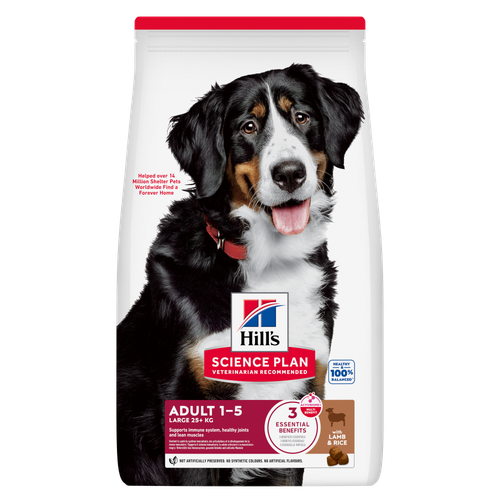 Large Breed Adult Dog Food
Large Breed Adult Dog FoodHill's Science Plan Large Breed Adult Dog Food with Lamb & Rice is a complete pet food, specially formulated with ActivBiome+ Multi-Benefit Technology.
This food is specifically designed to fuel the energy needs of large breed dogs during the prime of their life.Shop Now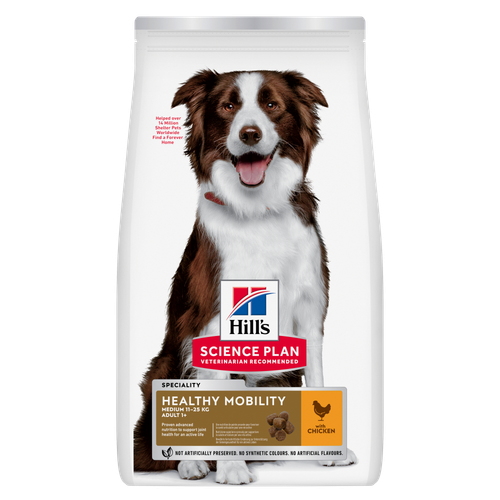 Healthy Mobility Medium Adult Dog Food
Healthy Mobility Medium Adult Dog FoodHill's Science Plan Healthy Mobility Medium Breed Adult Dog Food with Chicken provides advanced nutrition to support joint health and improve mobility.
Shop NowFeatured products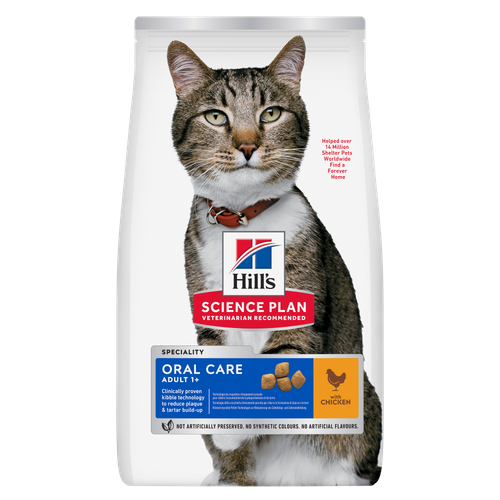 Oral Care Adult Cat Food
Oral Care Adult Cat FoodHill's Science Plan Oral Care Adult Cat Food with Chicken contains clinically proven kibble technology to reduce plaque & tartar build up.
Shop Now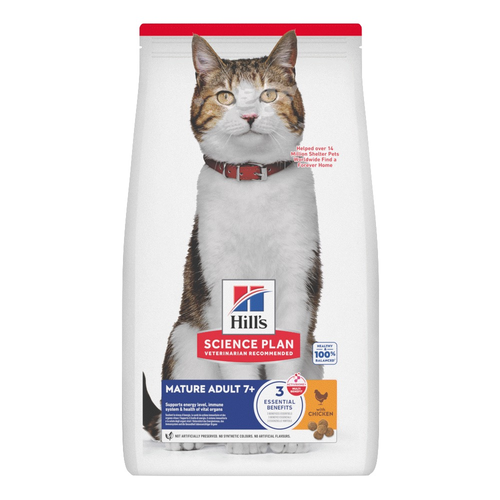 Mature Adult Cat Food
Mature Adult Cat FoodHill's Science Plan Mature Adult Cat Food with Chicken is a complete pet food, specially formulated with ActivBiome+ Multi-Benefit Technology.
This food supports graceful aging in cats, providing a synergistic ingredient blend to help support energy & activity levels.Shop Now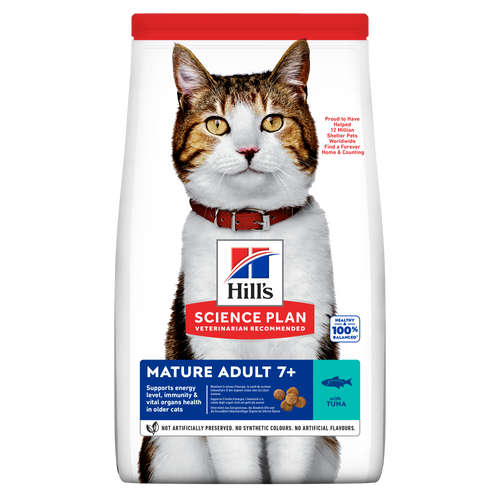 Mature Adult 7+ Cat Food
Mature Adult 7+ Cat FoodHill's Science Plan Mature Adult Cat Food with Salmon is a complete pet food, specially formulated with ActivBiome+ Multi-Benefit Technology.
This food supports graceful aging in cats, providing a synergistic ingredient blend to help support energy & activity levels.Shop Now -
Dog
- Dog Tips & Articles
-
Health Category
- Weight
- Food & Environmental Sensitivities
- Urinary
- Digestive
- Joint
- Kidney
-
Life Stage
- Adult Nutrition
Cat- Cat Tips & Articles
-
Health Category
- Weight
- Skin & Food Sensitivities
- Urinary
- Digestive
- Kidney
-
Life Stage
- Kitten Nutrition
- Adult Nutrition
Featured articles Proteins
ProteinsTo make a protein, amino acids are linked together in a long chain. The chain is then bundled into to a three-dimensional structure, like a tangled ball of yarn.
Read More The Right Diet For Your Pet
The Right Diet For Your PetIn people, the right diet is very important. If you are eating the wrong way for your metabolism, activity level, age and lifestyle you could end up with health issues.
Read More The Incredible Science Behind Your Pet's Microbiome
The Incredible Science Behind Your Pet's MicrobiomeLearn what your pet's microbiome is, how it contributes to your pet's gut and overall health, and why nutrition is important in maintaining healthy microbiomes.
Read More -


Concerned about how round your cat has become, or even notice your cat losing weight too quickly? It's easy for people to realise they've gained too much when their clothes get a little snug. When it comes to your feline friend it’s up to you to watch for the warning signs that. If your cat needs to lose weight, follow these tips:
Pawing at Obesity
Some cats are obviously obese by looking at their build, whereas others are en route to becoming an overweight cat. The first warning sign? Large fluctuations in weight. Believe it or not, your cat losing weight should be a concern too. Some health issues can cause weight gain, but others can come about because your cat's extra weight is making them sick. If your cat shows signs of any health issues, be sure to talk with your veterinarian, who can determine whether or not your cat needs to shed a few pounds to improve overall health.
Another sign that your cat is headed towards obesity is constant hunger. Feeding your cat a diet rich in fibre and protein can stimulate metabolism while also making your cat feel fuller longer. By giving your cat the proper nutrients they will feel more active, eat less often, and have a greater chance of maintaining a healthy weight.
Lack of Activity
Another sign you may have an overweight cat is when they’re less active than usual. Once a cat is spayed or neutered, they start to show signs of a slower metabolic rate, which means they may be less active and therefore need fewer calories. If this caloric intake isn't adjusted properly, the cat may continue to gain weight and become obese.
The age of your cat also needs to be considered when monitoring activity level. Typically, older cats do become less active and therefore may need to eat less food. Sometimes, pet parents who adjust their cat’s food notice activity levels picking up as a result. Also, consider asking your vet about a cat food specially formulated for cats after they have been spayed or neutered; this type of food accounts for the decrease in your cat's metabolic rate to reduce the chance of weight gain.


Tasty Tips
Are You Overfeeding?
The first step in helping a cat lose weight properly is to control the amount of food you're putting in the bowl. With the help of your veterinarian, choose a food that matches your cat's current age and dietary needs. Your food choice should be one that includes all the nutrients your cat needs to maintain a healthy life. Cats should also avoid human foods and products filled with artificial flavours and additives. Unsure about a type of nutrient rich food or how much to give your cat? Start by looking on the back of the package for suggestions (remember, one cup doesn't mean a heaped cup). It may be a good idea to get a measuring cup to track how much total food you are feeding everyday. In general, cats who are fed two or three smaller (and measured) meals per day tend to maintain a healthy weight.
Once you know exactly how much food your cat's getting each day, you should discuss the amount and frequency with your veterinarian. Although the back of food packaging gives a general idea of how much your cat should eat, your veterinarian is ultimately the best one to determine the type of food and the amount your cat should eat to lose or maintain a healthy weight. Once you have the right food amounts and a feeding schedule, your next step is to incorporate proper (yet entertaining) exercise into your cat’s routine.
Help Them Exercise Away the Weight
Food adjustments alone can help cats avoid obesity, but for most, it needs to be a combination of diet and exercise. Taking your cat on a walk or run with you isn't the best idea, but there are many ways you can get moving together in the comfort of your own home. Cats are natural predators and it's important for your cat to find playful ways to tap into this instinct. It can be fun for both cats and cat parents to set up new and creative games such as hide-and-seek or a miniature obstacle course inside the house. If you don't have simple items in your house that your cat is interested in playing with, a few new toys may help get them engaged and ready to be more active. Check out our list of cat games you can play with your cat to get them moving.
Start by getting your cat to play for about five minutes per day. After a few weeks, try to get them to a point where they are losing weight, by encouraging at least ten minutes of play every day. Any increase in activity could help your overweight cat get leaner and even maintain a healthy weight consistently. Once eating right and keeping a more active routine, your cat will truly be enjoying a higher quality of life—and that is something all pet owners want for their affectionate companions.
Taking Steps to Maintain It
Keeping your cat within a healthy weight range not only improves quality of life; it can also save you a lot of money. Pet owners spend millions every year fighting health problems caused by obesity, according to PetMD. Whether you have an obese cat now, one who's showing warning signs of being overweight, or just general concerns about their potential for obesity, taking steps to improve your cat's food intake and activity level benefits the whole family. To keep your cat maintaining a healthy weight, be sure to continually monitor that activity level and have your vet regularly evaluate their weight and dietary needs.


Chrissie Klinger is an educator, writer and mother of two children, three dogs and three cats. Her dog Jake loves sitting on her lap every chance he gets! She enjoys living an active and eco-friendly lifestyle in rural Pennsylvania.
Related products

Hill's Science Plan Oral Care Adult Cat Food with Chicken contains clinically proven kibble technology to reduce plaque & tartar build up.

Hill's Science Plan Mature Adult Cat Food with Salmon is a complete pet food, specially formulated with ActivBiome+ Multi-Benefit Technology.
This food supports graceful aging in cats, providing a synergistic ingredient blend to help support energy & activity levels.
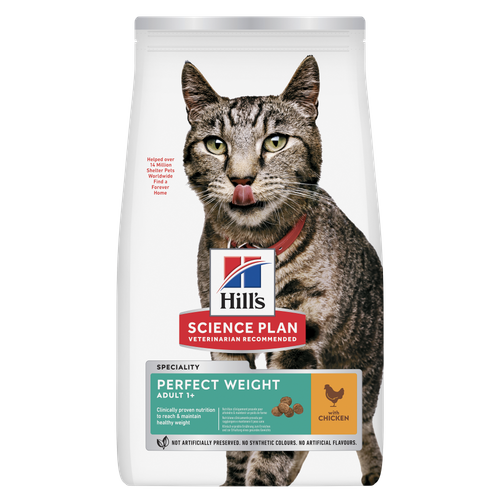
Hill's Science Plan Perfect Weight Adult Cat Food with Chicken is clinically proven nutrition to reach & maintain healthy weight.

Hill's Science Plan Mature Adult Cat Food with Chicken is a complete pet food, specially formulated with ActivBiome+ Multi-Benefit Technology.
This food supports graceful aging in cats, providing a synergistic ingredient blend to help support energy & activity levels.
Related articles

When learning how to train your cat, you'll start with very basic first steps that both reward good behavior and discourage the bad.

Did you know that brushing your cat's teeth is just as important as brushing your own? According to the American Veterinary Dental Society, 70% of cats show signs of oral disease by age 3. Brushing your cat's teeth is easier if you follow this step-by-step guide.

Find the right Hill

Good nutrition is about the right balance of nutrients. Learn more about health issues when feeding a cat food that has an improper nutritional balance from your friends at Hills Pet Nutrition.

Put your cat on a diet without them knowing
Our low calorie formula helps you control your cat's weight. It's packed with high-quality protein for building lean muscles, and made with purposeful ingredients for a flavorful, nutritious meal. Clinically proven antioxidants, Vitamin C+E, help promote a healthy immune system.
Put your cat on a diet without them knowing
Our low calorie formula helps you control your cat's weight. It's packed with high-quality protein for building lean muscles, and made with purposeful ingredients for a flavorful, nutritious meal. Clinically proven antioxidants, Vitamin C+E, help promote a healthy immune system.

